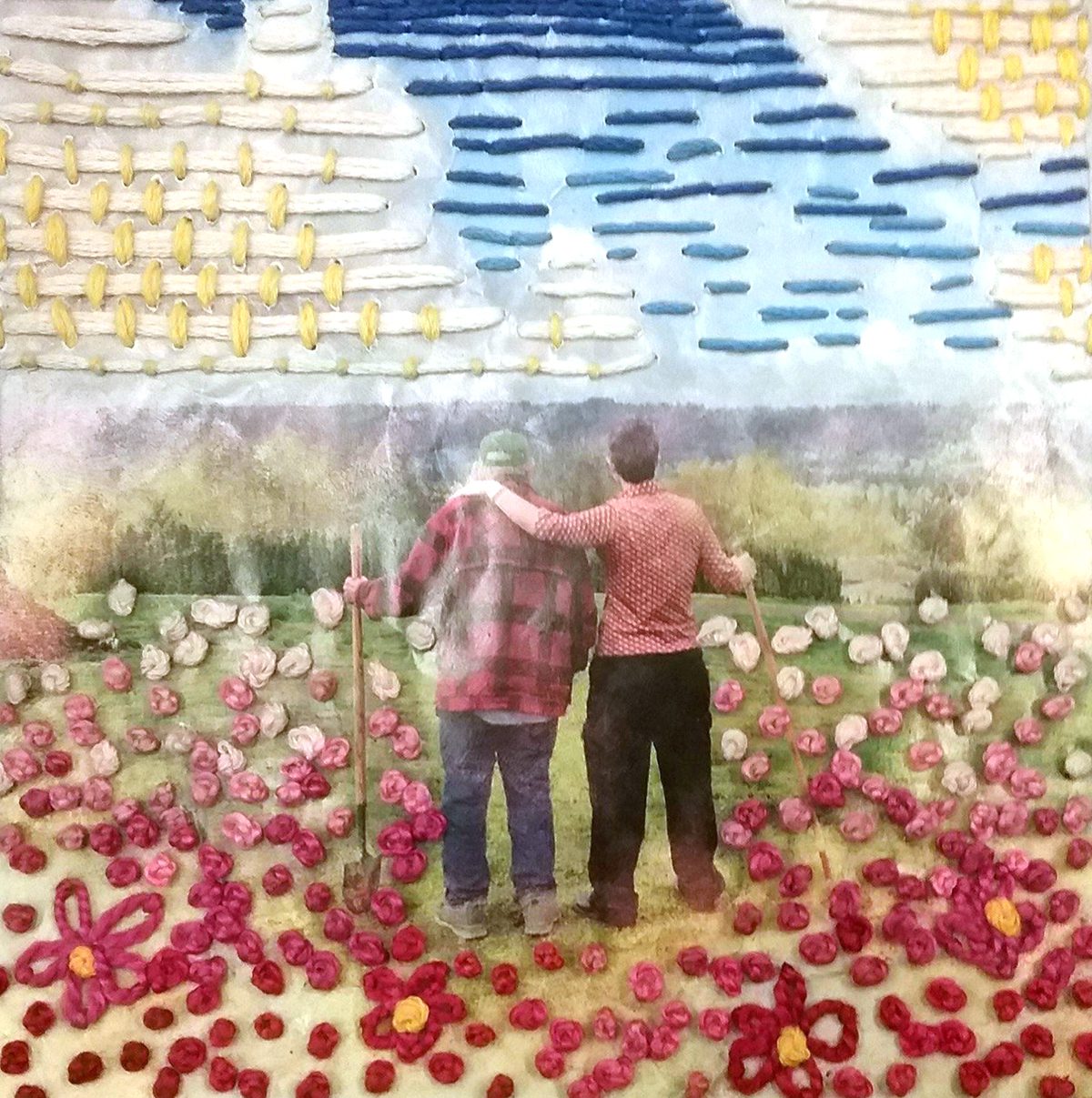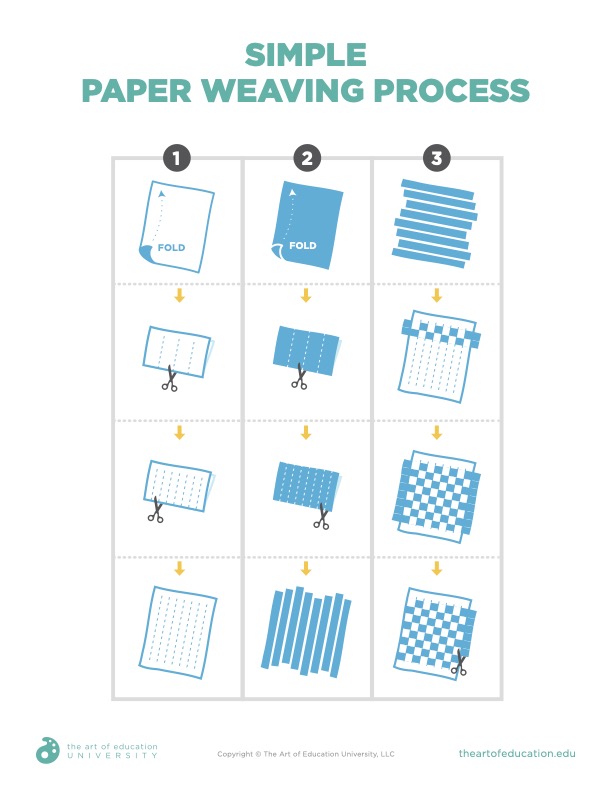According to AOEU’s 2022 State of Art Education survey, you feel most confident in teaching two-dimensional mediums. This is likely because most of our art and teaching programs focus on traditional two-dimensional mediums like drawing and painting. But one medium that art teachers continually request more training in, and admit to feeling less qualified to teach, is fibers. Many fine arts programs split craft and fine art apart or don’t teach “craft” at all. Teaching something you may not have much formal training in is intimidating. While the average art teacher may feel unequipped to teach a year-long fibers course, start small by adding elements to your favorite lessons!
Read on to discover four unexpected ways to pull fibers into your drawing, painting, photography, and sculpture classes.
Check out this article for four fabulous ways to bring fibers into your classroom.
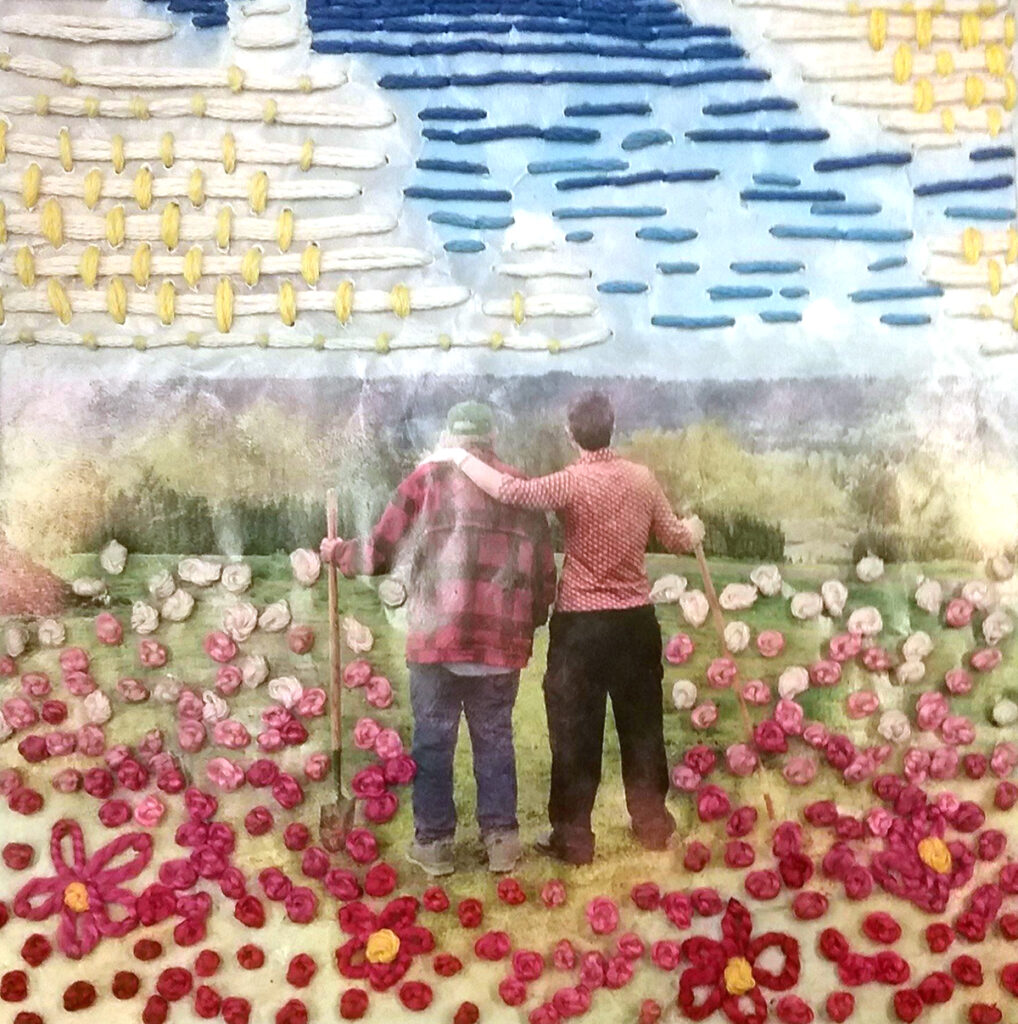
1. Altered Surfaces
Students can alter the surface of a two-dimensional piece with embroidery. First, lead students through a demonstration of basic embroidery stitches. This can be done as an all-class activity or with students individually following a video tutorial. Additionally, students can make their own samplers.
Are you nervous about handing pointy needles to your students before you know they can sew? Cassie Stephens’ tips for teaching embroidery to her third graders with burlap and blunt tapestry needles are great for beginners of all levels!
A helpful step in planning is to take photographs of two-dimensional artworks. Print them out and have students practice their embroidery techniques directly on the copy. This provides students with an opportunity to practice and see what the final product can look like. Then, encourage students to add embroidery to their completed pieces for a pop of color, texture, or pattern.
Students working on paper or a printed image will likely have to pre-poke the holes they will sew through. If a student is working on stretched canvas, challenge them to embroider on the canvas before they start painting. This will build texture in unexpected ways, and it can create a more tactile experience for the viewer.
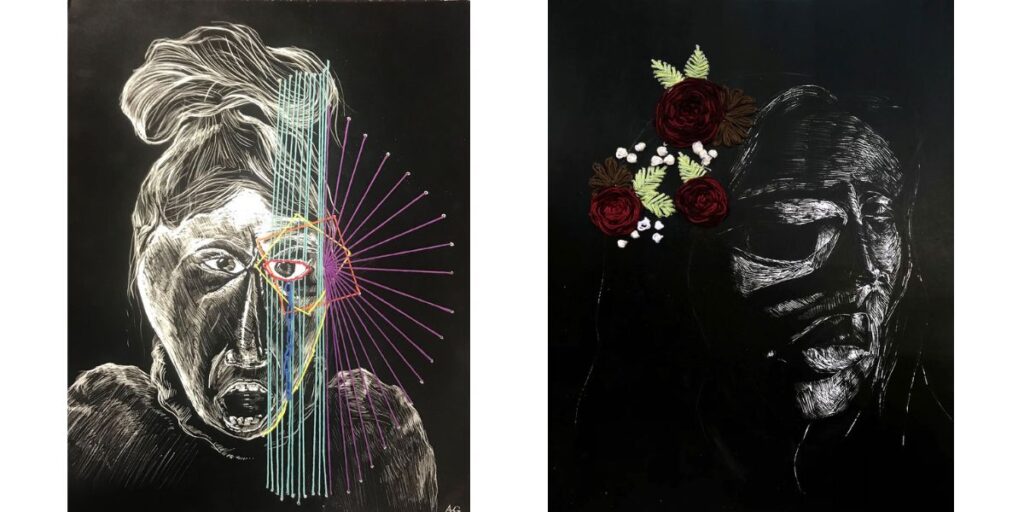
2. Clothing as a Surface
Integrating fibers does not mean it requires sewing! Have students bring in an article of clothing to use as a surface for their original piece. Discuss how the concept behind the artwork can change based on the surface it’s on or the final form it takes. For instance, how will the meaning change if [insert idea here] was on a dress versus a flat, static surface?
Inspire students by sharing current streetwear trends and artists like Keith Haring, who also used clothing as a painting surface. Use a medium that will be permanent on the piece of clothing, like acrylic paint, fabric paint or inks, or permanent fabric markers.
Are you struggling with student engagement?
Students may feel intimidated about creating art on something meant to wear. Ask them to design some casual cosplay from a favorite anime or to research DisneyBound. Alter the article of clothing they brought in to fit into their casual cosplay design. This can help students visualize what wearing original artwork can look like.
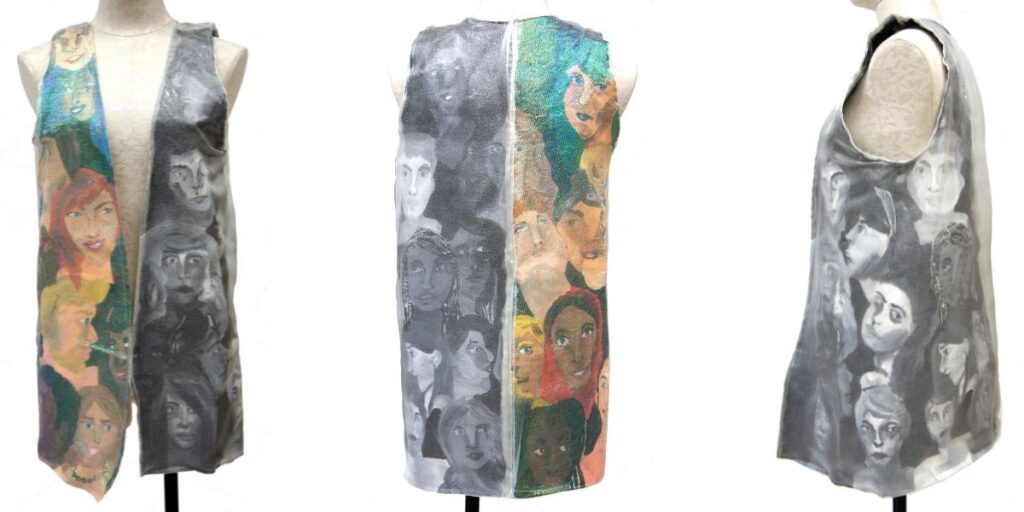
3. Nontraditional Looms
Even sculpture classes can get in on fibers by constructing nontraditional looms and sewing surfaces. Study different basic weaving techniques as a class. Students design their loom using materials you have already taught them about.
For example, design a clay slab with holes to sew through in a ceramics class. Twyla Feinbloom is a great example of an artist who uses a similar technique with embroidered wood pieces. She even has a page of her portfolio dedicated to process planning. Or, try weaving with clay, like in this tutorial on woven ceramic baskets.
Are you still nervous about teaching weaving? Check out Wonders of Weaving Collection for beginner to advanced lessons to get you started. You can find those in FLEX Curriculum.
4. Woven Images
Fiber art doesn’t necessarily mean limiting yourself to working with yarn or cloth. Introduce students to paper weaving techniques. If you are new to paper weaving, download this Simple Paper Weaving Process guide from the Lesson, Painted Paper Weaving. You can find this lesson and more in FLEX Curriculum.
Download Now!
Practice a few different weaving techniques with your students and ask them to play with different shapes and lines in the warp and weft. Students create two images that somehow relate to one another. For instance, these can be two printed self-portrait photographs. One photograph depicts how the student feels the world sees them. The second photograph is how they see themselves. Another example can be a final piece to advocate against littering. The first image is a drawing of a clean marshland, and the second is a drawing of trash clogging a gutter. Document each image before the weaving process. Cut the images into strips. Using their newfound weaving techniques, intertwine the two pieces into one woven image.
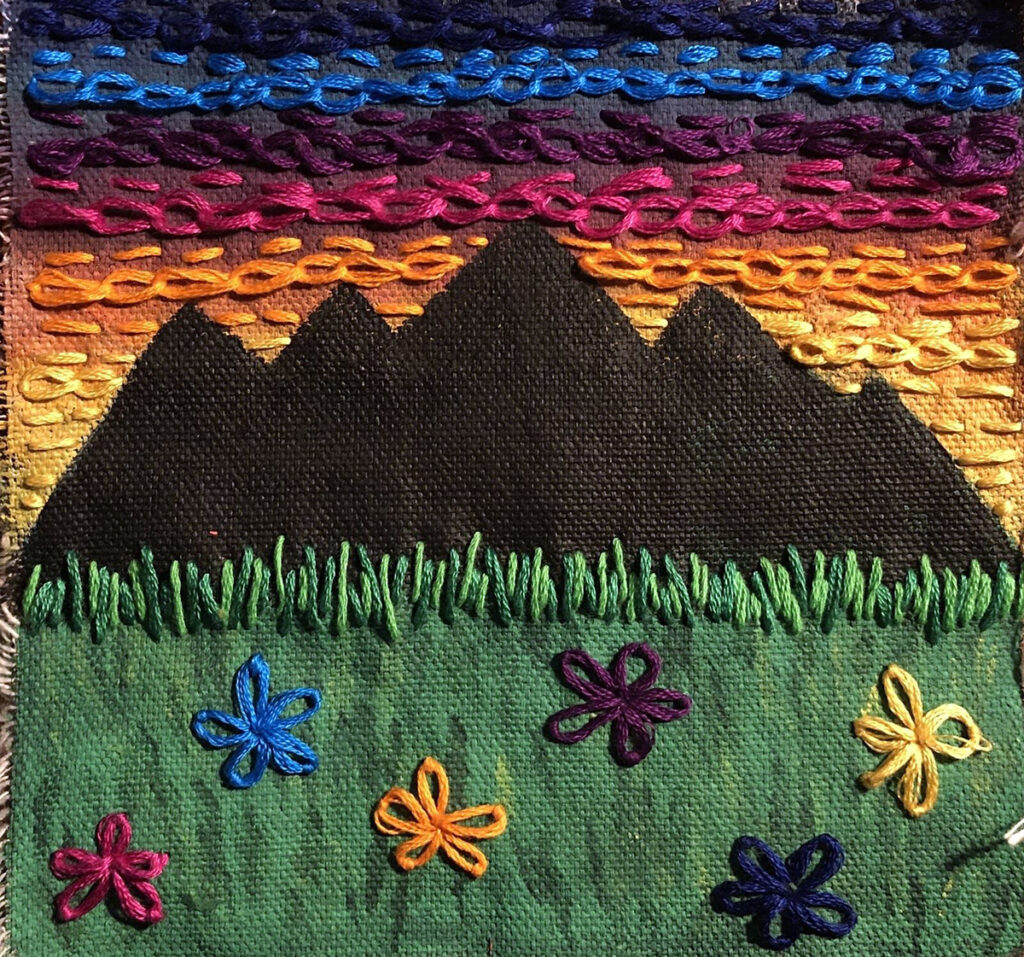
It’s no secret that students love hands-on learning. It’s what makes the art room magical and engaging. Fiber art can beautifully bridge the satisfaction of working with one’s hands with the comfort of teaching two-dimensional mediums and approaches. Take small steps to learn more about fibers. Try these ideas and incorporate them into your existing lessons. It’s a guaranteed way to add a fresh twist to your curriculum this school year!
Do you want to dive in deeper with fibers?
- Do Crafts Have a Place in the Art Room?
- History Runs Deep: How to Celebrate Artivism and Craftivism
- Integrated Fibers Collection found in FLEX Curriculum
- Sewing Basics in the Art Room Pack found in PRO Learning
- Bringing Hand Sewing Into the Art Room Pack found in PRO Learning
- Studio: Fibers Graduate Course
How will you incorporate fibers into your curriculum this school year?
If you can’t answer a student’s question about fibers, how will you explore a solution together?
What is your confidence level with fibers? Identify one next step you can take to learn more!
Magazine articles and podcasts are opinions of professional education contributors and do not necessarily represent the position of the Art of Education University (AOEU) or its academic offerings. Contributors use terms in the way they are most often talked about in the scope of their educational experiences.
